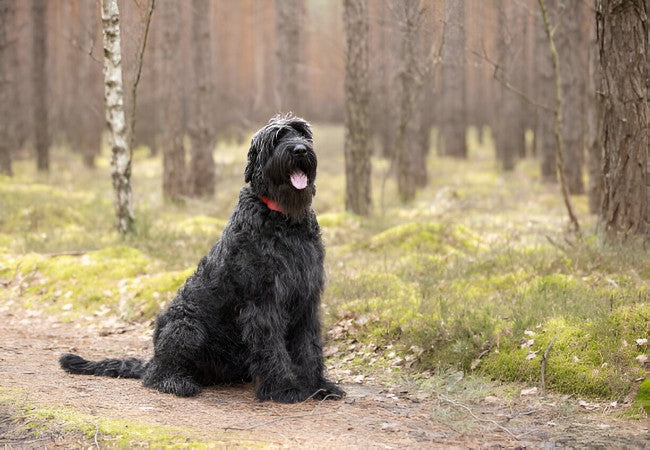Giant Schnauzer 2025 Guide: Temperament, Care & Training 🐶

In this article
Giant Schnauzer 2025 Guide: Temperament, Care & Training 🐶
By Dr. Duncan Houston BVSc
The Giant Schnauzer is a powerful, loyal, and highly intelligent working breed originally developed to drive cattle and guard property in the Bavarian Alps. As the largest of the Schnauzer family, this breed excels in protection work, agility, and companionship—when matched with an experienced handler. In this comprehensive 2025 breed guide, we explore how to raise, train, and care for the commanding yet affectionate Giant Schnauzer. 🐾
📜 Breed Origins
This breed was developed in Germany in the 17th century by crossing Standard Schnauzers with larger working breeds like Great Danes and Bouvier des Flandres. Giant Schnauzers quickly gained fame for their utility on farms and in military and police work. 🇩🇪
🧠 Temperament & Personality
Giant Schnauzers are alert, confident, and task-driven. Typical personality traits include:
- Protective: Naturally wary of strangers—an excellent guardian
- Loyal: Deeply bonded with their owner or family unit
- Intelligent: Learns quickly and enjoys working on tasks
- Energetic: Needs daily mental and physical exercise
🏡 Ideal Home Environment
This breed requires space, structure, and leadership. Ideal environments include:
- Homes with secure yards and experienced handlers
- Active families or working-dog households
- Properties with guarding or training outlets
Not suitable for novice dog owners or sedentary homes. 🏡
✂️ Coat Type & Grooming
The Giant Schnauzer has a dense, wiry coat that requires regular upkeep:
- Brushing: 2–3 times weekly with a slicker or stripping comb
- Hand-stripping: Recommended every few months to maintain coat texture
- Bathing: Every 6–8 weeks or after heavy activity
- Ear/Nail Care: Weekly ear cleaning and monthly nail trims
🏃♂️ Exercise & Enrichment
This working breed requires high-intensity physical and mental engagement:
- 90–120 minutes of activity daily (agility, running, hiking, tracking)
- Obedience training, scent work, and puzzle games
- Job-oriented activities—these dogs want a purpose
Without stimulation, behavioral issues may develop. 🧠
🍗 Nutrition & Feeding
Feed a balanced, large-breed working formula:
- High-quality animal proteins (beef, chicken, fish)
- Joint-supporting nutrients like glucosamine and chondroitin
- Moderate fat for sustained energy
Split meals into two portions daily. Use Ask A Vet for personalized meal planning. 🍽️
🩺 Common Health Concerns
Though generally healthy, Giant Schnauzers may face:
- Hip & Elbow Dysplasia: Common in large working breeds
- Bloat (GDV): Life-threatening—feed smaller meals, limit post-meal activity
- Hypothyroidism: May cause weight gain, lethargy
- Eye Issues: Cataracts and PRA in older dogs
Use Ask A Vet to monitor and address early signs. 🩺
🎓 Training & Socialization
This breed is a top-tier learner with proper leadership. Training essentials:
- Early socialization and obedience classes are critical
- Use firm but positive reinforcement—no harsh correction
- Daily practice to reinforce desired behaviors and commands
🧘♂️ Emotional Needs
This breed thrives on leadership and purpose:
- Provide consistent routine and structure
- Keep them mentally engaged with jobs or challenges
- Supervise closely during interactions with strangers and other dogs
Behavioral advice is available via Ask A Vet. 🧠
🏁 Final Thoughts: Is the Giant Schnauzer Right for You?
If you want a bold, intelligent, and protective working partner who thrives on training and structure, the Giant Schnauzer could be your perfect match. With proper leadership, care, and enrichment, this breed becomes a powerful yet affectionate lifelong companion. ❤️
Need expert help developing a care plan? Start your consult today at Ask A Vet!






